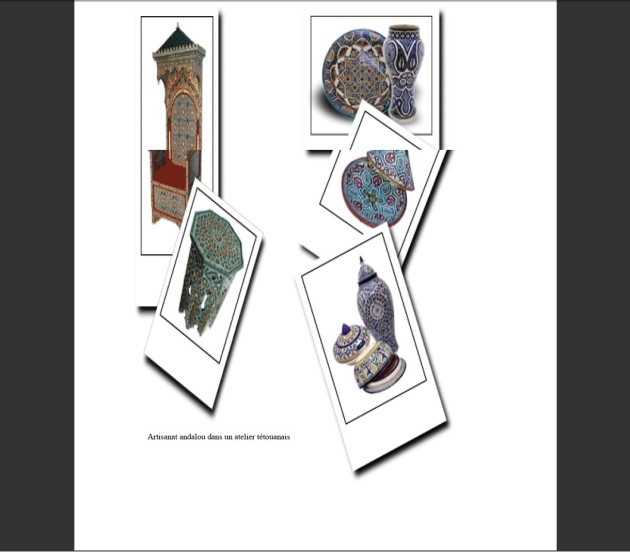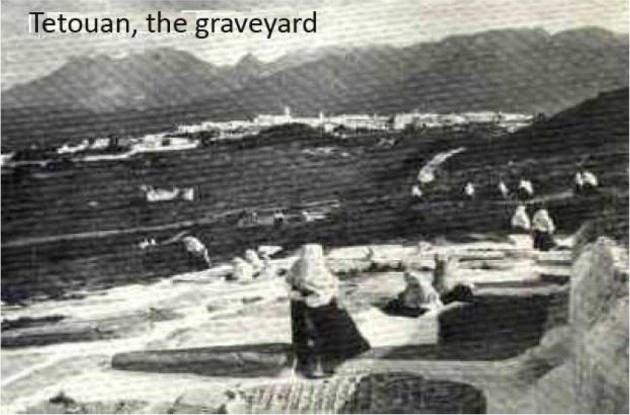A Moroccan mindscape steeped in hospitality and wariness.
The manifest solidarity exhibited by the ‘Moriscos', turned ‘Andalusians' no sooner they had been forced to cross the Straits of Gibraltar, was reinforced by hardship and elicited in the host society the feeling that it was dealing with a homogenous group integrating successfully though at the end of a long and difficult process. The new arrival may well have shared the prevailing faith, it was no less different in salient identity traits, some of which were discernible – idioms, geographic origin (from Aragon, Catalonia, Granada), the experience of exile – but others, touching on morality and behaviour – sociability, discretion, sincerity a subtle mixture of dignity and generosity – less so. The Morisco-Andalousian, as frequently described in period documents is « proud, neat in his presentation and in his work, a lover of music and flowers »
. But at the same time, he « has always lived with the fear of the next day forced upon him by persecution from hostile authorities »
. Thus, between Muslims, admiration could at time be tinged with jealousy-driven frustration : a superiority complex, whether genuine or projected, fed on the humiliations and expressions of scorn or mistrust lacing the marks of hospitality.
The Andalusian group that left its mark through a most outstanding heritage, rooted in a distinctive and carefully nurtured memory, is that of the Granadinos who settled Tetouan. To Arab poets, Tetouan is the « white dove »
, to the morisco-Adalousians, she is the « daughter of Granada »
, or indeed, to the Jews of Morocco, the « little Jerusalem »
. It is a unique city because of the origin of its founders and of its current population : two mountains framed the abandoned city to the South and to the North, offering natural protection, whilst its sea front configuration offered inappreciable strategic advantages. The new Andalusian builders devised a fortification technique which ensured both easy exit for sea forays and protection from military incursions. Within its walls Tetouan is a display of all that distinguishes Andalusian Architecture : in its battlements, its kasbah[1], its small houses and its unique intricately decorated palaces, its minarets, its mausoleums, its fine hostelries. It got bigger fast, through internal demographic growth and through successive Granadino migration waves ever preserving its style. The only Moroccan port not to be occupied by a European power, it was the main transit hub for many precious goods. Because of its trading relations, in the 16thand 17thcentury it enjoyed soaring economic expansion and a strong socio-cultural influence.
Tetouan's history is interwoven with that of the Al Mandari family. Situated 40 kilometres (around 30 miles) south of Ceuta, a town conquered by Spain, it was taken over by the « 300 hundred horsemen sent by the commander Sidi Ali Al Mandari[2] who were able to mastermind the construction of the walls, fortifications, mosques and houses [...] this was in 1484-1485 »
. This Andalusian-Granadino family maintained over the centuries its position of benefactors of the city. This has been documented by historian Muhammad Daoud, one of its scions who died in 1985. His life was given over to compiling a history of his city which counts eight volumes Tarikh Titwan (A History of Tetouan) for which there is no translation in Spanish, French, or English. In the mid-twenties, he conducted a research centred on surnames, which exposed a number of running threads : some Spanish names were passed down the generations ; some of the names that had been ‘Christianised' after the 1502 decree were preserved whereas others were changed upon arrival on the Land of Islam to expunge forever the humiliation of expulsion ; many have disappeared – « not currently in existence »
. This corroborates a more recent anthroponimic research conducted by Guillermo Gozalbes Busto. Among significant names still current, we may mention : Al Malagui (from Malaga, which evolved into Al Malki), Ibn Al Ahmar, Al Adalousi, Bays, Al Banzi, Bargach (derived from Bargas), Al Biruni, Al Khatib, Daoud, Al Garnati (literally ‘the Granadino'), Torres, Moulina, Salas, Garcia, Assarraj.
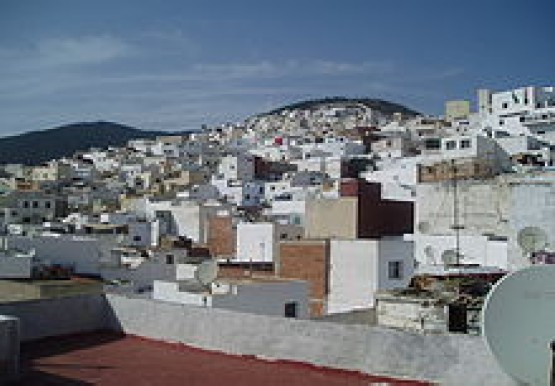

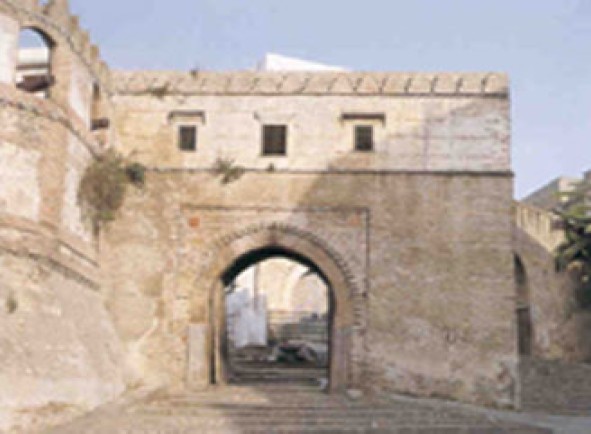
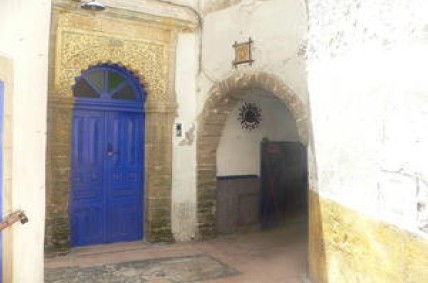
To these names must be added those of Tetouan's great Jewish families, the most influential of whom were the Fermi, Almonsino, Bendelas, Cases, Coriat, Crudo, Falco, Taurel, Ben Brahim, Tayab, Rote, Bibas, Cohen et Bimind. Collective memory dates from 1530 « the official creation of the Adalusian Jewish community »
. On that date its members asked Hayim Bibas[3], heir to an expelled family, to become altogether their rabbi and official judge, recorder of the community established in Tetouan, they had found a founding father. Andalusian Jews represent the largest community of their faith established in northern Morocco. They take a good deal of pride in their Judeo-Andalusian cultural traits and make a great show of them thus Rabbi Yehudah Ben Attar[4] « Fes, Larache, Meknes and Sefrou followed the customs of Tetouan's expelled community at a time when Tetouan's court enjoyed undisputed authority in the region »
. Collective memory stresses the sympathetic and pacific nature of inter-community relationships forged on Tetouan's soil between Andalusian Jews and Muslims. Even though the Jews were in very small number compared to the Muslims, both groups shared common past, customs, ordeal, activities and projects. Marmol[5] notes that « Andalusian Jewish and Morisco merchants command the town centres in Fes, Tetouan, Tangier where they excel in every aspect of the industrialisation and marketing of textiles, silk, luxury carpets and crafted goods »
.
From the earliest migratory waves the Andalusians built mosques, souks and fortifications, gates and fountains, gardens and other structures unfamiliar to Moroccan society.

The buildings exhibit extraordinary fluidity in term of architecture, sculpture, painting, « the deft match of colours »
and in a particular use of such materials as wood, stucco and marble. This artistic heritage spread from Tetouan to Rabat-Salé, from Chefchaouen to Fes-Meknes. Besides construction, it applies to clothing, especially women's dress, embroidery and jewellery. The newcomers' devotion to the Muslim faith accounts for the many mosques built in the 17th century, the zenith of Andalusian-Granadino architecture. The Sidi Assaidi mosque built in Tetouan in 1609 by Alhaj Sidi Kacem[6] stands out for the beauty of its zellige[7] and its sculptures.
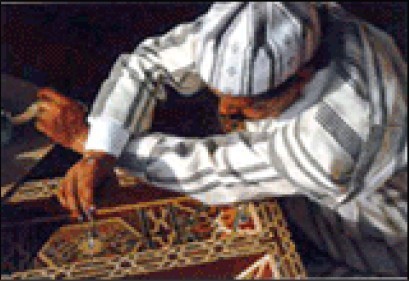
Andalusian tombs give a tangible account of religious feeling and social practices : the means and artistic tastes deployed suggest distinguished dead, say from the Banu Nasr family (Nasrids) for instance. To be found at the North of the city they were an object of Guillermo Gozalbes Busto's study but today they show the ravages of age.
More than five centuries after the first expulsions from Spain, Andalusian cultural traits are seen by the Moroccan people as belonging fully to a vibrant plural identity, even though there still remains some marginalised elements. Their impact has been deep and lasting. Fez, Tangier and Tetouan orchestras still include instruments specific to the Andalusian music known as al ala[8]. Its perpetuation has long been encouraged by Moroccan authorities. However besides these cultural outcrops of a specific past, there is nowhere in Spain or in Morocco any site of memory whilst France has institutionalised this aspect of her past by creating a “Cité nationale de l'histoire et de la mémoire de l'immigration[9]”. This is a risky enterprise where the fine line between history and memory has to be observed, eschewing deformation and occultation when seeking to rescue from oblivion or to rehabilitate this or that community. This has not deterred Moroccan historians from wishing the creation of a National Museum of Migration dedicated to all minorities and entrusted with a triple mission : symbolic and material landmark, resource centre (material and oral archives, taped and filmed records, educational materials, etc...) : a national and international show window for neighbouring countries who also took in Andalusians and with whom future projects could be considered. The aim of this initiative would be to promote in Morocco and elsewhere the development of Moriscology in its inescapable Euro-Mediterranean framework.
Whereas memories are alive to this subject, it remains no less true that the facts are not – or badly – recorded in most history textbooks.




